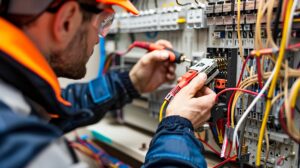Summer Solar Strategy: Maximize ROI with Longer Days
As California enters its sunniest season, homeowners looking to reduce energy bills and increase property value should seriously consider enhancing their solar energy systems. At Sunlight Electrical Solutions, we understand that summer isn’t just about sunshine—it’s about strategy. With extended daylight hours, higher utility rates, and the modern Net Billing Tariff (NEM 3.0) framework in place, now is the perfect time to optimize your residential solar setup to maximize return on investment (ROI).
This article provides a comprehensive look at how California homeowners can strategically harness the power of summer sunlight. We explore why energy storage is more critical than ever, how longer daylight hours impact solar energy output, and what trends are shaping solar investment in 2025.
Why Summer Sunlight Offers a Solar Edge
California’s summer season boasts some of the longest and brightest days of the year. In cities like Sacramento, San Diego, and Fresno, the average day sees 14 to 15 hours of sunlight between June and August. According to the National Renewable Energy Laboratory (NREL), solar panels in California can produce 20–40% more energy in summer compared to winter months due to increased irradiance and fewer cloudy days.
Key Summer Advantages:
- Higher Solar Output: Systems generate more kilowatt-hours (kWh) per panel.
- Peak Utility Rates: Utility companies often raise rates during summer afternoons, precisely when solar panels are producing the most.
- Accelerated ROI: Greater energy production means faster payback periods.
Homeowners who time their installations or upgrades before or during summer can immediately capitalize on the high solar yield, reducing dependency on grid power during peak cost periods. For those considering installation soon, reviewing why Dublin, CA is perfect for solar energy in 2025 can provide essential insights on timing, incentives, and weather benefits.
Energy Storage: The NEM 3.0 Imperative
With the implementation of the Net Billing Tariff (NEM 3.0), California’s solar landscape has shifted. Unlike previous net metering programs, exporting excess energy to the grid now earns homeowners significantly less—especially during the daytime when solar output is highest and grid demand is low. The California Public Utilities Commission (CPUC) states that NEM 3.0 values exported electricity based on an hourly avoided cost calculator, often yielding only 25–30% of the retail rate.
Batteries Add Critical Value Under NEM 3.0
- Energy Shifting: Store solar energy produced during the day and use it at night when rates spike.
- Grid Independence: Reduce reliance on utility companies and avoid low export compensation.
- Enhanced Savings: Batteries enable homeowners to self-consume a greater percentage of their energy, which is more financially beneficial under NEM 3.0.
According to the Lawrence Berkeley National Laboratory, homeowners with battery storage under NEM 3.0 can retain 80–90% of their solar energy, compared to only 50–60% without storage.
Homeowners can explore how solar + battery systems boost energy efficiency and savings under current policies. Strategic battery use is no longer a luxury—it’s essential to maximizing return.
Optimizing Solar System Design for Summer Efficiency
Installing solar panels is only part of the equation. The system must be designed with summer performance in mind, particularly in California’s hot climate. The following considerations can significantly enhance your system’s effectiveness:
System Orientation and Tilt
Panels should ideally face south or southwest for optimal afternoon production when utility rates peak. A tilt angle between 15–30 degrees is generally recommended in California for maximum summer exposure.
Inverter Capacity and Clipping Avoidance
Oversizing solar panels relative to inverter capacity can cause energy clipping—especially during high-output summer days. A properly sized inverter ensures you capture all available energy.
Heat Management
High temperatures can reduce panel efficiency. Choosing high-temperature-tolerant panels and ensuring sufficient airflow under the panels can mitigate output losses. Microinverters or optimizers also help manage voltage drop from heat.
To compare system components effectively, homeowners can review the best alternatives to Tesla batteries and inverters that perform well under California’s high summer temperatures.
The Residential Trend: Investing in Protection and Longevity
Homeowners today are increasingly concerned with long-term investment protection. Sunlight Electrical Solutions offers Solar Insure’s “Total 30” and “Solar 30” warranties, which cover:
- 30 years of performance and product warranty
- 30 years of monitoring protection
- Financial safeguards in case a manufacturer or installer goes out of business
These protections distinguish your system from basic installations by ensuring peace of mind through every season—not just summer. According to Solar Insure, over 1 in 10 solar companies fail within five years. Investing in long-term coverage is a strategic decision, not an upsell.
To understand how solar panels can increase your home’s value, it’s important to consider warranties, efficiency, and system design—especially for resale value and energy independence.
Trends Influencing Summer Solar Decisions in 2025
Battery Installations Are the Norm
With export credits dropping, over 70% of new residential solar systems in California now include battery storage (Source: California Solar and Storage Association, 2025).
Time-of-Use (TOU) Awareness
Utility providers have shifted to TOU billing, meaning energy costs vary depending on when it’s used. Batteries are key to avoiding high rates between 4 PM–9 PM.
Financing Options Expand
More homeowners are choosing financing options that bundle solar and storage with warranties. Loan providers now offer tailored packages that account for savings under NEM 3.0, making it easier to see positive cash flow from day one.
Heads up: the Federal Solar Investment Tax Credit (ITC)—currently covering 30% of your system cost—expires on December 31, 2025, so California homeowners should lock in their projects before then to secure maximum savings.
Energy Independence Is a Motivator
Homeowners are increasingly investing in solar not just for savings, but for energy security. Summer blackouts and rolling brownouts across the state drive urgency. For context on grid resilience, read about what happens to your power during a Bay Area blackout, and how solar + storage systems can offer uninterrupted energy.
Preparing for a Smarter Summer Strategy
For homeowners considering solar, the best strategy starts with aligning installation timing and system design to take full advantage of summer conditions. At Sunlight Electrical Solutions, we focus on education and customization, ensuring every system is tailored to your home’s energy profile, shading, orientation, and goals under NEM 3.0.
We also steer clear of outdated or low-value services. While we support EV chargers as a supplemental service to solar and storage projects, it is not a standalone offering due to project scale and resource allocation. Likewise, fencing work is performed only when mandated by local building departments. We prioritize meaningful energy projects that deliver long-term value.
If you’re considering solar, remember that your window to benefit from California’s longest, sunniest days is open now—but it won’t last forever. The sooner your system is activated, the sooner you start saving with every sunrise. Contact our team today to begin planning a system built for maximum summer impact.







